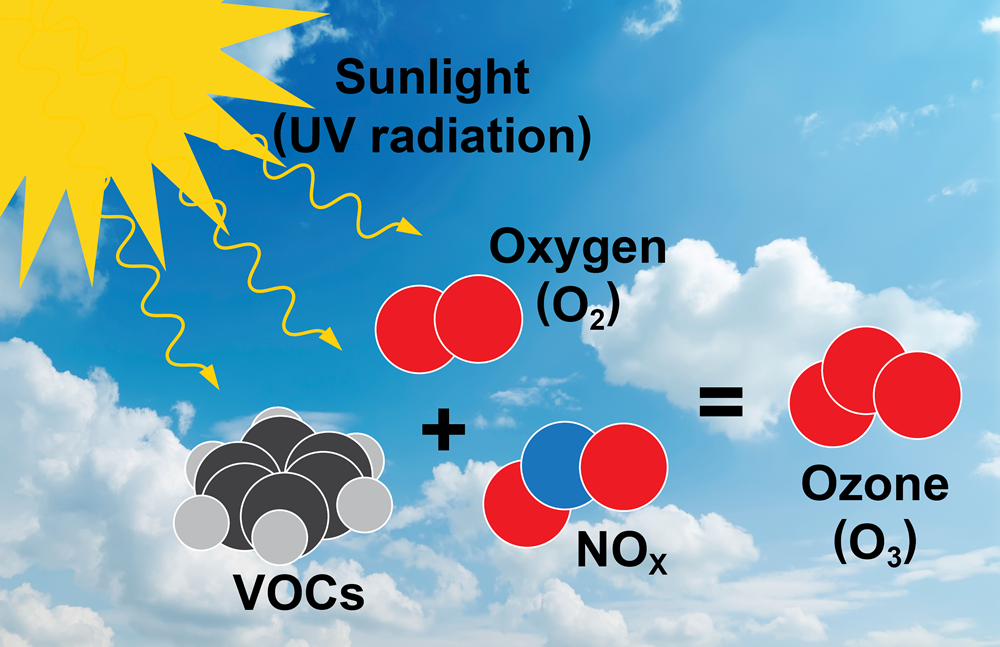O3 - Ozone

Ozone forms in the atmosphere through chemical reactions between oxygen, precursor pollutants like VOCs and NOX, and sunlight.
Ozone (O3) is a gas composed of three oxygen atoms, unlike the diatomic oxygen (O2) we must breathe. Ozone is not usually emitted directly into the air. At ground-level, ozone is created by chemical reactions between diatomic oxygen (O2), nitrogen oxides (NOX) and volatile organic compounds (VOCs) in the presence of sunlight. NOX and VOCs come from motor vehicle exhaust, industrial emissions, gasoline vapors, chemical solvents, and some natural sources.
Ozone can be "good" or "bad" depending on its location in the atmosphere. The natural ozone layer in the upper atmosphere absorbs most of the sun’s damaging ultraviolet radiation. Ground-level ozone in the lower atmosphere is considered "bad." Many urban areas tend to have high levels of "bad" ozone, but even rural areas can have high ozone because wind carries it and its precursor pollutants hundreds of miles away from their original sources.
There is one primary and one secondary federal standard for ozone. Several Oklahoma sites are close to exceeding the standard.
Ozone Monitoring Sites
The division monitors ozone at 14 sites across the state. These locations report data hourly and are the basis of the Air Quality Health Advisory program. Current data may be accessed here.
Ozone and Your Health
Ozone is a serious air quality problem in many parts of the United States. Even at low levels, ozone can cause negative health effects. People with lung diseases, children, older adults, and people who are active outdoors may be particularly sensitive to ozone. Numerous scientific studies have linked ozone pollution exposure to a variety of problems, including:
- respiratory system irritation
- aggravated asthma
- decreased lung function
- increased susceptibility to infection
- coughing or difficult breathing
- permanent lung damage
2017 Ozone Data
Primary and Secondary Ozone Standard = 0.070 parts per million (8-hour average)
To compare to the standard, 8-hour average concentrations are tracked, and the fourth-highest daily maximum is averaged across three consecutive years.
2017 Ozone Values vs. 8 Hour NAAQS
- McAlester
- *Skiatook
- Glenpool
- Mannford
- Tulsa-Lynn Lane
- Tulsa-Peoria
- Lawton
- Yukon
- Seiling
- Moore
- Goldsby
- OKC-Health
- Choctaw
- OKC-North
- Standard
- 0.060
- 0.062
- 0.063
- 0.063
- 0.064
- 0.064
- 0.064
- 0.065
- 0.065
- 0.066
- 0.066
- 0.066
- 0.067
- 0.069
- 0.070
- 0.050
- 0.055
- 0.060
- 0.065
3 yr avg ('15-'17) 4th highest daily max
8 hr avg Ozone concentration (ppm)
*Incomplete data set (less than three years of data)